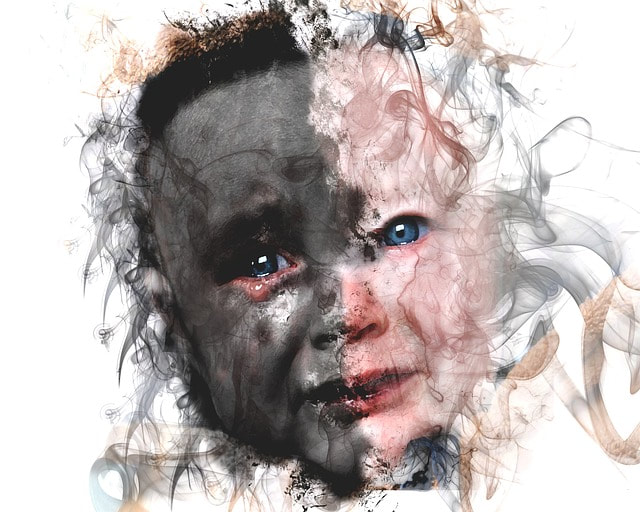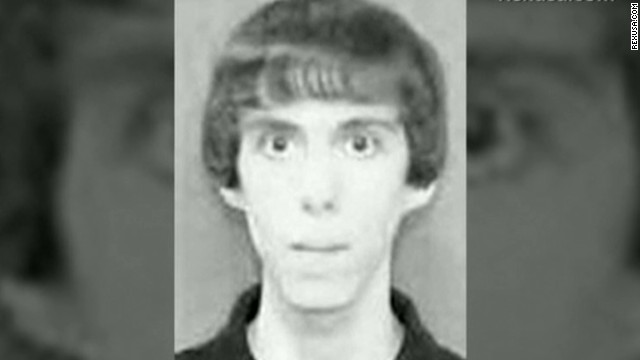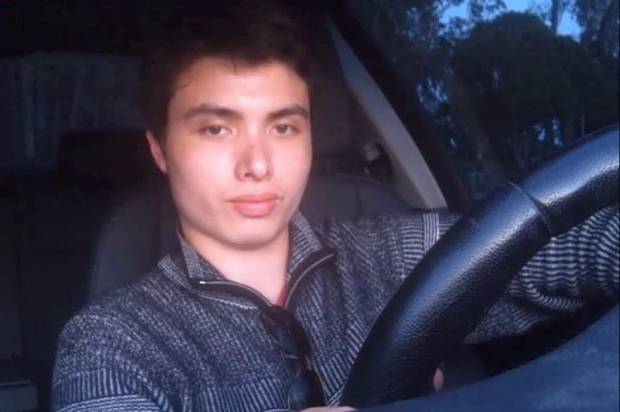This is no minor statement considering that the US "prevalence" rate as estimated in the Diagnostic and Statistical Manual-5th Edition of Mental Disorders is 4.6%. We have about 325,000,000 people in the United States. Actually, today, October 15, 2017, the official UN estimates that we have 325,127,159 folks in the US. That means we have about 15,000,000 people with Schizotypal Personality Disorder.
What is truly disturbing is that, those with SPD in a clinical population (those diagnosed and receiving treatment,) are estimated to be 0% to nearly 2%. In reality, out of those 15,000,000, none of them are receiving treatment or as many as 300,000 are receiving treatment. Do you think they all need treatment? Maybe not treatment, but their families need to be educated and they need support of some kind.
I consider the situation to be intensely dangerous. I really don't want to hear myself say this, but considering the "few" high profile incidences involving what I consider to be suspiciously related to SPD, we've gotten off "lucky" so far. Certainly, the family and friends of both the victims and the perpetrators do not think so. My apologizes, in advance.
I identified a total of 3 persons with "emerging" SPD over the course of 23 years and 1200+ clients, if my memory serves me correctly, they were misdiagnosed with mild autism. Personality disorders are generally not diagnosed before the age of 18 unless the behaviors have been observed for at least a year. There's one exception to this...
Antisocial Personality Disorder (APD) is not diagnosed before the age of 18 (considered to be early adulthood) because, frankly, kids are not mobile enough or have the resources or have the opportunity to be described as Antisocial. However, as I have said before in my article on ADHD, the "run-up", if you will, to APD is Attention-Deficit/Hyperactivity Disorder, Oppositional Defiant Disorder and Conduct Disorder.
Personality disorders require an "onset" in early adulthood.

- Personality disorders are different from other forms of mental illness because they "(A) represent an enduring pattern of inner experience and behavior that deviates markedly from the expectations of the individual's culture. This pattern is manifested in two (or more) of the following areas:
- Cognition (i.e., ways of perceiving and interpreting self, other people and events).
- Affectivity (i.e., the range, intensity, lability and appropriateness of emotional responses)
- Interpersonal functioning.
- Impulse control.
(B). The patterns of behavior are inflexible and pervasive across a broad range of personal and social situations.
(C). The enduring pattern leads to clinically significant distress or impairment in social, occupation, or other important areas of functioning.
(D). The pattern is stable and of long duration, and its onset can be traced back at least to adolescence or early adulthood.
(E). The enduring pattern is not better explained as a manifestation or consequence of another mental disorder.
(F). The enduring pattern is not attributable to the physiological effects of a substance (e.g., a drug of abuse), a medication, or another medical condition (e.g., head trauma)".
[Taken from pages 646-647 of the Diagnostic and Statistical Manual of Mental Disorders, 5th Edition.]
Over 30,000,000 million Americans have one or more of the following personality disorders.
Personality Disorders are grouped in 3 clusters:
Cluster A: The "odd" or "eccentric" person
1. Paranoid Personality Disorder
2. Schizoid Personality Disorder
3. Schizotypal Personality Disorder
Cluster B: The "dramatic", "emotional", or "erratic" person
1. Antisocial Personality Disorder
2. Borderline Personality Disorder
3. Histrionic Personality Disorder
4. Narcissistic Personality Disorder
Cluster C: The "anxious" or "fearful" person
1. Avoidant Personality Disorder
2. Dependent Personality Disorder
3. Obsessive-Compulsive Personality Disorder (different from Obsessive- Compulsive Disorder)
After the Umpqua Community College shooting where 10 people, including the shooter, were killed, I heard a local talk-radio show host making fun of this guy's mother because she helped him to buy guns.
Once I explained Schizotypal Personality Disorder and how he likely trained her to protect him even beyond the point of reason because he had been rejected and neglected by his peers throughout his life, it was not longer a case of a "lone incident", but rather a pattern that was seen in Sandy Hook and Isla Vista/Santa Barbara events.
By the time I returned to my office (I made the call to the station from my car while sitting in the parking lot of the grocery store), I had 72-75 messages from parents with the common theme of "I think this is happening in my family". I chose to return 3 calls which seemed the most serious.
By the time I finished two of the calls, the parents of their adult, male children, gave me permission to call the police. Why? They were afraid for their safety and that of their sons because these men were escalating with gun buying and increasingly "bizarre behavior". From the quick history we reviewed, I suspected it was SPD we were dealing with.
I called the respective police departments, explained the situation and asked for a "welfare check". Police departments are now well-trained in these situations. Parents had their own instructions on how to proceed once the police dealt with the immediacy of the danger. Neither of these men had ever had mental health intervention. No surprise there. They were seen as "odd, weird and eccentric". One mother describer her son as "different". "He's always been different." and apparently, not in a positive way.
The third family was another story. There were no weapons involved, but the situation was ripe for violence because of their son's ever-increasing disorganized behavior, paranoia and hallucinations. It was clear he needed to go to a psychiatric emergency room for immediate intervention and assessment. He had the same history as seen in those with SPD. Isolated, rejected, neglected, no friends, "odd" with "unusual interests".
These three men were at a point where their disorganized behavior was of great concern.
When you hear the term "disorganized behavior" in the media, it's an overall term to describe an inability to take care of one's daily needs, unpredictable emotional responses (too little or too much) and an inability to go to work or interact with others in a healthy fashion. Basically, everything's going down the tubes and people become non-functional, but that doesn't mean they're not dangerous as they can be volatile. They may not be able to plan an attack, but they can be explosive and use whatever is at hand.
Please know that violence among those with SPD is not a "given". It's just that the behavior of the 3 killers responsible for mass casualties have profiles that are alarmingly aligned with the diagnostic criteria.
Those with Schizotypal Personality Disorder are at high risk for becoming psychotic.
Schizotypal Personality Disorder is described by the DSM-5 as follows:
"A. A pervasive pattern of social and interpersonal deficits marked by acute discomfort with, and reduced capacity for, close relationships as well as by cognitive or perceptual distortions and interpersonal deficits marked by acute discomfort with, and reduced capacity for, close relationships as well as by cognitive or perceptual distortions and eccentricities of behavior, beginning by early adulthood and present in a variety of context, as indicated by five (or more) of the following:"
"1. Ideas of reference (excluding delusions of reference)." [Everything relates to their own destiny. Even minor events have strong personal significance. Oh, he's wearing the shirt I love, he must love me.]
"2. Odd beliefs or magical thinking that influences behavior and is inconsistent with subcultural norms (e.g., superstitiousness, belief in clairvoyance, telepathy, or 'sixth sense' in children and adolescents, bizarre fantasies or preoccupations)." [I can control other people with my mind.]
"3. Unusual perceptual experiences, including bodily illusions." [Feeling strange sensations, lacking an arm, hearing voices, environment moving from color to black-and-white for fleeting moments, feeling as though they are not in their own body.]
"4. Odd thinking and speech (e.g., vague, circumstantial, metaphorical, over-elaborate, or stereotyped." ["All people who wear black are evil." When explaining themselves, use "non-words" or end up confusing the issue instead of clarifying.]
"5. Suspiciousness or paranoid ideation." [This is where the danger comes in. When feeling threatened, as with most people, they will defend themselves. Unfortunately, most of the danger is imagined.]
"6. Inappropriate or constricted affect." [Smiling or laughing inappropriately or have little emotional response to situations that warrant a certain expression.]
"7. Behavior or appearance that is odd, eccentric, or peculiar." [Wearing a jacket in stiffling heat, wears the same clothes over and over, buttons and unbuttons, folds and unfolds items.]
"8. Lack of close friends or confidants other than first-degree relatives." Mother and female family members are their closest social relationships. Spend a significant amount of time online. Probably still lives at home with mother who is divorced.
"9. Excessive social anxiety that does not diminish with familiarity and tends to be associated with paranoid fears rather than negative judgments about self." [Doesn't trust anyone no matter how long they've known them. Paranoid about the intentions of others and has negative thoughts about themselves.]
Note: If criteria are met prior to the onset of schizophrenia, add "premorbid", e.g., "schizotypal personality disorder (premorbid)."
What might you see when interacting with them?
- Unhappy about their lack of relationships, but still keep to themselves because they feel different and know they don't fit in.
- Have little eye contact.
- Struggle with the "give and take" banter of social interactions
- Wears stained, ill-fitting clothes
- May not have a sense of social conventions which are the arbitrary rules we engage in many times of day such as how to shake hands and minor pleasantries.
- They impress you as being "odd" or "eccentric".
Do you remember when Adam Lanza's brother was interviewed about "what he knew" about his brother's "condition"? He indicated that all he knew was that his mother told him that Adam was autistic.
That set off a siege of calls to my office from family members of my clients with autism. They wanted to know if there was any danger. No. There's no danger. In 23 years of private practice, I've never known a truly autistic client to be dangerous. Oh sure, they have anger for their tormentors and may want them to stop or want to hurt them back, but that's the extent of it. None of them has ever acted on their anger.
Lanza's father reported that he "suspected that his son might have also suffered from undiagnosed schizophrenia in addition to his other conditions". It was apparent that the family thought Lanza's odd behavior was assigned to autism. Indeed, he appeared to have a number of symptoms related to autism in his early years including sensory processing disorders and obsessive-compulsive behavior and was given medication that caused debilitating side effects and he stopped taking it.
Here was a young man who was diagnosed and treated and had a family with resources to help him, but they appeared to be pursuing the wrong condition. Only one group of clinicians seemed to appreciate the gravity of his condition, but to my understanding, the focus was on special education supports and medical management of obsessive-compulsive symptoms.
I have yet to see any mention of Schizotypal Personality Disorder. None. Yet, he deteriorated to the point where his paranoia and distorted thinking resulted in 20 deaths of children, 6 adults and his mother. He wanted to save the children from the abuses of life and from the misery he experienced.
Adam Lanza was 20 years old on the day he killed himself at Sandy Hook Elementary School.
Elliot's own words indicated that he "wanted to fit in, but was cast out". He described himself as lonely, rejected by women and jealous of his younger brother who was socially savvy. He reported being bullied as a kid.
Parents later reported that he had "deep and puzzling psychological problems" since he was 8, but they blamed it on their divorce. He was diagnosed with "high functioning autism", but another psychiatrist said that he may also have been experiencing depression or anxiety.
Elliot was lonely and introverted and parents moved him from school to school, counselor to therapist and were urged to put him on antipsychotic medication. He was "distant, remote, unknowable" according to his father. Bullied at school, he suffered panic attacks.
Elliot finally attended a small public school with intensive individual attention. He graduated.
After he left for college, he became more withdrawn. He was beaten up one night after a party after he tried to shove a girl off a ledge. After that event, he started telling others, "I'm going to kill them. I'm going to kill them. I'm going to kill myself." Nearly a year later, he acted on his words.
Elliot's family was very wealthy. He was described as a "privileged son of Hollywood". His mother bought him a Black BMW when he went to college. She thought it would help to improve his stature. He used it as a weapon to "spray bullets from the window and plowed down bicyclists that Friday night".
At one earlier point, Elliot drove by two blonde girls "waiting at a bus stop. He flashed a smile at them and was ignored". His reaction was to pull up to them and throw his latte all over them. He enjoyed feeling "spiteful satisfaction" when he saw the stains his drink left on their jeans.
On another occasion, Elliot wrote of watching "a flock of beautiful blonde girls playing kickball one day with fraternity jocks in a public park". He was so enraged that he went to a store, bought a water gun and filled it with orange juice. He returned to the park, screamed at them and sprayed them with his super soaker".
In his final years in Isla Vista, Elliot withdrew into the online world and began posting videos on YouTube and Facebook showing how "absurd it was that they did not find him alluring".
Elliot Rodger was 22 years old when he killed himself.
Chris joined the Army, but left after just one month. He failed basic training.
Get this. One more time, he was identified as having serious problems from his teen years and graduated from Switzer Learning Center in Torrance, a school with which I am very familiar. The school is for those with special needs including emotional problems, autism and high-functioning autism.
Chris' mother said online that he had Asperger's Syndrome which is high-functioning autism. Others report that she called him "baby" frequently. He was always dressed in military-type clothing of combat boots, military-style cargo pants and he rode a bike. He also appeared to have Nazi leanings and asked his victims questions about their religion. Those who identified themselves as Christians were shot again and again.
Chris' online postings mentioned Sandy Hook and the on-air shootings on two Virginia journalists.
Chris was 26 when he died of suicide.
1. Divorced.
2. Long history, beginning in childhood, of being different, isolated, anxious, depressed and having special needs.
3. Lived with their mothers.
4. Did not have sustained intimate, sexual relationships.
5. Longed for relationships, but couldn't find a way to achieve them.
6. Became so helpless/hopeless, disillusioned and depressed that they devolved into revenge and destruction.
7. The killers had "adaptive behavior" deficits meaning that they were not achieving the young adult guidelines of independence, maturity and academic achievement and entrance into the world of work expected of their age.
1. Stop ignoring those kids who are different in a way that causes them to be isolated, rejected and neglected.
2. We have to follow-up with those kids identified on the autism spectrum with a diagnostic assessment by a licensed clinician. Assessments should occur at 3-year intervals to make certain they are achieving the adaptive skills expected of them.
3. We should monitor those kids and make certain they continue to make progress in their social skills and occupational pursuits through comprehensive evaluations with input from teachers and parents.
4. We educate their families as to "what might happen" if their kids' "autistic" behaviors morph into "something else".
5. Launch a nationwide campaign teaching about Schizotypal Personality Disorder.
6. Require therapists to undergo continuing education about the potential dangers of SPD and ways to report their concerns to family and law enforcement.
7. Educate law enforcement as to their potential role in dealing with people and their families with this disorder should the stockpiling of weapons occur.
We can do better, so, let's do it. I'm not saying that Stephen Paddock, the Las Vegas shooter had Schizotypal Personality Disorder. We don't know enough yet, but so far, he doesn't fit the profile of the other 3 killers. We've got a lot to learn about these people.
Join me on Facebook at Dr. Claudia McCulloch








